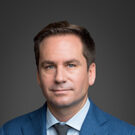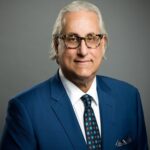One windy night at Elon Musk’s SpaceX facility in McGregor, Texas, Lonnie LeBlanc and his co-workers realized they had a problem.
They needed to transport foam insulation to the rocket company’s main hangar but had no straps to secure the cargo. LeBlanc, a relatively new employee, offered a solution to hold down the load: He sat on it.
After the truck drove away, a gust blew LeBlanc and the insulation off the trailer, slamming him headfirst into the pavement. LeBlanc, 38, had retired nine months earlier from the U.S. Marine Corps. He was pronounced dead from head trauma at the scene.
Federal inspectors with the U.S. Occupational Safety and Health Administration (OSHA) later determined that SpaceX had failed to protect LeBlanc from a clear hazard, noting the gravity and severity of the violation. LeBlanc’s co-workers told OSHA that SpaceX had no convenient access to tie-downs and no process or oversight for handling such loads. SpaceX acknowledged the problems, and the agency instructed the company to make seven specific safety improvements, including more training and equipment, according to the inspection report.
It was hardly the last serious accident at SpaceX. Since LeBlanc’s death in June 2014, which hasn’t been previously reported, Musk’s rocket company has disregarded worker-safety regulations and standard practices at its inherently dangerous rocket and satellite facilities nationwide, with workers paying a heavy price, a Reuters investigation found. Through interviews and government records, the news organization documented at least 600 injuries of SpaceX workers since 2014.
Many were serious or disabling. The records included reports of more than 100 workers suffering cuts or lacerations; 29 with broken bones or dislocations; 17 whose hands or fingers were “crushed”; and nine with head injuries, including one skull fracture, four concussions and one traumatic brain injury. The cases also included five burns, five electrocutions, eight accidents that led to amputations, 12 injuries involving multiple unspecified body parts and seven workers with eye injuries. Others were relatively minor, including more than 170 reports of strains or sprains.
Current and former employees said such injuries reflect a chaotic workplace where often under-trained and overtired staff routinely skipped basic safety procedures as they raced to meet Musk’s aggressive deadlines for space missions. SpaceX, founded by Musk more than two decades ago, takes the stance that workers are responsible for protecting themselves, according to more than a dozen current and former employees, including a former senior executive.
Musk himself at times appeared cavalier about safety on visits to SpaceX sites: Four employees said he sometimes played with a novelty flamethrower and discouraged workers from wearing safety yellow because he dislikes bright colors.
The lax safety culture, more than a dozen current and former employees said, stems in part from Musk’s disdain for perceived bureaucracy and a belief inside SpaceX that it’s leading an urgent quest to create a refuge in space from a dying Earth.
“Elon’s concept that SpaceX is on this mission to go to Mars as fast as possible and save humanity permeates every part of the company,” said Tom Moline, a former SpaceX senior avionics engineer who was among a group of employees fired after raising workplace complaints. “The company justifies casting aside anything that could stand in the way of accomplishing that goal, including worker safety.”
One severe injury in January 2022 resulted from a series of safety failures that illustrate systemic problems at SpaceX, according to eight former SpaceX employees familiar with the accident. In that case, a part flew off during pressure testing of a Raptor V2 rocket engine – fracturing the skull of employee Francisco Cabada and putting him in a coma.
The sources told Reuters that senior managers at the Hawthorne, California site were repeatedly warned about the dangers of rushing the engine’s development, along with inadequate training of staff and testing of components. The part that failed and struck the worker had a flaw that was discovered, but not fixed, before the testing, two of the employees said.
Cabada’s wife told Reuters the company has ignored the family’s attempts to find out why he wasn’t protected. “It would have been nice to get a call from Elon Musk,” Ydy Cabada said. “But I guess workers are just disposable to them.”
In all, Reuters interviewed more than three dozen people with knowledge of SpaceX safety practices, including more than two dozen current or former employees. Many of the sources spoke on condition of anonymity, citing concerns about career or legal repercussions.
SpaceX did not respond to questions from Reuters and a detailed description of this article’s findings.
The more than 600 SpaceX injuries Reuters documented represent only a portion of the total case count, a figure that is not publicly available. OSHA has required companies to report their total number of injuries annually since 2016, but SpaceX facilities failed to submit reports for most of those years.
About two-thirds of the injuries Reuters uncovered came in years when SpaceX did not report that annual data, which OSHA collects to help prioritize on-site inspections of potentially dangerous workplaces.
Reuters unearthed details about the 600-plus injuries by examining court documents in worker lawsuits, employee medical records, state workers’ compensation claims and emergency-call records. The news agency also obtained, through public records requests, internal SpaceX injury logs that the company turned over to federal and state safety inspectors following serious safety incidents. Such logs are rarely made public. Regulators require companies to keep the records, which include descriptions of individual injuries, and to produce them upon request.
After years of failing to report annual injury-and-illness statistics to regulators, some SpaceX sites started filing the data in 2021 or 2022. The data for 2022, which are more complete, reveal injury rates at three major SpaceX industrial facilities that far exceeded the space-industry average.
The 2022 injury rate at the company’s manufacturing-and-launch facility near Brownsville, Texas, was 4.8 injuries or illnesses per 100 workers – six times higher than the space-industry average of 0.8. Its rocket-testing facility in McGregor, Texas, where LeBlanc died, had a rate of 2.7, more than three times the average. The rate at its Hawthorne, California, manufacturing facility was more than double the average at 1.8 injuries per 100 workers. The company’s facility in Redmond, Washington, had a rate of 0.8, the same as the industry average.
Two other SpaceX facilities in Florida, at Kennedy Space Center and Cape Canaveral, could not be compared to the industry average in 2022. Kennedy didn’t report injury data that year. And the company labeled Cape Canaveral as part of a different industry subcategory for which the government doesn’t calculate an average rate.
The Kennedy site did report injury data for 2016, the first year it was required to do so – but hasn’t reported since. For that year, the facility reported data amounting to an injury rate of 21.5 injuries per 100 workers, about 27 times the industry average. The facility employed only 50 people at the time; it had just taken over a launch pad from the U.S. National Aeronautics and Space Administration (NASA). Sixteen of those workers were injured, SpaceX reported. By 2021, employment at Kennedy had grown to more than 1,100 workers, NASA said.
A dozen worker-safety experts said SpaceX’s poor safety record underscores the perils of working in the lightly regulated and fast-expanding U.S. space industry. Other major space companies have also failed to report annual injury data to OSHA in some recent years.
Reuters reviewed state and federal safety violation records on SpaceX and found no sanctions for its data-reporting failures. For safety violations that inspectors found after SpaceX worker accidents, state and federal regulators levied only small fines, typically ranging from a few hundred to a few thousand dollars.
In a written response to questions from Reuters, OSHA did not comment on SpaceX’s worker safety record or its enforcement decisions involving the company. The agency did not address why it never cited SpaceX for failing to report injury data for many years, saying it would be “unfair to draw a conclusion” because it didn’t know “the specifics.” Reuters documented the safety reporting lapses using the agency’s own records.
The agency did say it has recently increased inspections of companies generally and issued more of its stiffest penalties in egregious cases.
California OSHA, a state-run workplace safety regulator, did not comment in response to Reuters’ questions.
NASA said it has paid SpaceX $11.8 billion to date as a private space contractor. The agency did not comment on the company’s safety record but said it has the option of enforcing contract provisions that require SpaceX to “have a robust and effective safety program and culture.”
SpaceX has defended its safety practices in written responses to OSHA and CalOSHA. In response to an inquiry into the Cabada accident, SpaceX argued to CalOSHA that it shouldn’t be held responsible for such injuries because it provides extensive safety training and the malfunction was not reasonably foreseeable. Accountability for such part failures and any resulting injuries falls instead on a cadre of employees known as “responsible engineers,” or REs, the company wrote.
“REs are ultimately responsible for all aspects of their components and systems,” including safety, the company wrote. “Put simply, the RE is the delegated SpaceX representative.”
Safety specialists dismissed SpaceX’s contention that it can off-load the company’s duty to ensure worker safety to specific engineers it employs. Jordan Barab, who served as an OSHA deputy assistant secretary between 2009 and 2017, called the notion “ludicrous.”
OSHA told Reuters that employers, not designated employees, are responsible for ensuring a hazard-free workplace.
Travis Carson, a former Brownsville welder and production supervisor, said SpaceX generally left staffers in charge of their own safety, with little training or oversight.
“SpaceX’s idea of safety is: ‘We’ll let you decide what’s safe for you,’ which really means there was no accountability,” said Carson, who has worked for more than two decades in dangerous jobs such as building submarines. “That’s a terrible approach to take in industrial environments.”
‘NO ACCOUNTABILITY’
Since Musk co-founded SpaceX in 2002, his free-wheeling entrepreneurism has proved a powerful draw for young skilled workers. Some SpaceX employees described eagerly joining the company as it outpaced competitors and offered perks including in-house medical clinics and private company stock that has shot up in value. The company, which employs 13,000 workers, had an estimated value of $150 billion as of earlier this year. Musk has a 42% stake and 79% of the company’s voting power, according to a company filing.
SpaceX has achieved major breakthroughs. It was the first private company to send humans into orbit. Its Starlink unit is now the world’s largest satellite operator. Competitors including Jeff Bezos’ Blue Origin have struggled to keep pace with SpaceX’s reusable rockets, which have slashed launch costs.
Some SpaceX engineers say they relish collaborating with creative coworkers in an environment with little bureaucracy.
“There’s a certain amount of red tape that SpaceX avoids, which allows it to move faster” than NASA or private competitors, said Chris Cunnington, a former engineer in McGregor, Texas. He said he believed SpaceX struck a good balance between speed and safety.
Other current and former employees at the company’s Brownsville site, which had the highest 2022 injury rate, said the company’s disdain for structured processes came at a high cost to workers.
SpaceX started building its Brownsville site in 2014, and it has since become the epicenter of Musk’s Mars mission. The facility employs more than 1,600 workers on the Texas-Mexico border and combines manufacturing, testing and launching. It’s the base of SpaceX’s Starship program, a project aiming to build cheaper rockets faster.
Brownsville managers, many of them in their 20s, worked grueling hours trying to meet Musk’s deadlines, according to six current or former employees familiar with the site’s operations, including Moline and Carson. Some workers slept overnight at the facility at times so they could work more than 80 hours a week, according to four of those employees.
Carson worked at the Brownsville site as a welder in 2019 and 2020 and returned as a production supervisor in 2021 and 2022. He said some employees took Adderall, the stimulant typically used to treat attention-deficit disorder, without a prescription. Others fell asleep in bathrooms, said Carson and three other current or former Brownsville workers.
To speed work and cut costs, SpaceX started manufacturing rockets in tents next to an undeveloped Gulf of Mexico beach. Workers welded rocket parts up to 12 hours a day, six days a week, often in temperatures over 100 degrees Fahrenheit, the SpaceX workers said. When overcome by heat, they were given IV fluids and sent back to work.
When high winds disrupted the work, supervisors shut the tents, closing off ventilation that is essential for safe welding, according to the six current and former workers. OSHA warns that welding stainless steel can generate a highly toxic, cancer-causing dust. The agency told Reuters it requires companies to assess the danger of such environments through air sampling and to implement a “respiratory protection program” when needed. One former welder, Phillip Fruge, said he asked managers for respirators commonly used to protect welders’ lungs, but they weren’t provided.
“We could see the clouds of the dust filling the tent,” Fruge recalled. “Everyone was just breathing it in, day after day.”
Carson said he pressed superiors for better safety measures but was ignored. He recalled stepping into the interior of a rocket under construction in 2021 on his first day as a supervisor. Another manager, working 20 feet above him, carelessly dropped a nearly 100-pound hoist, barely missing Carson.
“That’s like a firing offense at other places, but not at SpaceX,” Carson said. “They needed bodies, and Elon needed stuff done.”
Carson himself eventually was fired in January 2022 after getting into a scuffle with a boss. Carson, who is African American, said he shoved the manager, a younger man, because he had repeatedly called Carson “boy,” despite Carson’s requests that he stop. “Boy” is widely considered a racial epithet by Americans when used to refer to a Black man. The supervisor, who could not be reached for comment, was not disciplined, according to Carson. Reuters could not independently confirm how SpaceX handled the incident.
SpaceX sometimes rushed to hire workers and regularly failed to properly train or equip new recruits, more than a dozen current and former employees said. Workers with no experience, for instance, were handed welding tools without training, they said. Four of these employees, who were managers fresh out of college, described making tough calls on the safety of dangerous activities with little guidance.
In November 2021, two Brownsville technicians were moving square steel tubing weighing 500 pounds, using a crane with a lifting magnet, according to OSHA inspection records. The tubing fell and crushed a worker’s hand because the crane was only designed to hoist 300 pounds, OSHA concluded.
The employee, whose name was redacted in the inspection report the agency gave Reuters, required long-term treatment after surgery, including the partial amputation of the worker’s ring finger, according to the report. The agency faulted the company for failing to ensure employees tested whether the crane could lift the load. SpaceX appealed the resulting $43,506 fine and got it knocked down to $8,701 after agreeing to remedy the worker-safety problems identified in the report.
Florentino Rios suffered a severe eye injury at SpaceX’s Brownsville site one summer night in 2021, as he worked about 25 feet off the ground attaching two beams to a launch pad. A crane operator missed a hand signal from Rios and mistakenly tried to move the beams after they were fixed in place, Rios said in an interview. That error caused a chain connecting the crane to the beams to snap and strike Rios in the face. Another worker who was present confirmed Rios’ account.
The team should have had walkie-talkies, Rios said, and had previously asked management for better lighting.
As blood trickled down his face, Rios inched along a beam to a platform where he was lowered down, he said. SpaceX employees who examined him at an on-site medical clinic told him he could return to work on the next shift, although he still couldn’t see well, said his attorney, Richard Hinojosa. Reuters could not independently confirm the SpaceX medical clinic’s assessment.
Rios went to the hospital that night. A medical scan revealed a traumatic injury in his swollen left eye, according to medical and workers’ compensation records reviewed by Reuters. He continued to work anyway for a few days. When he sought further treatment, doctors told him he had lost vision in the eye and was legally blind, the records show.
Rios, 55, said he can no longer drive or work construction. He sued SpaceX alleging its negligence caused the injury by failing to implement or follow worker-safety procedures. “It wasn’t safe,” Rios said, adding that management never addressed the problems.
The company, in court records, argued that Rios’ own negligence was to blame. The case is ongoing.
“I used to be someone who didn’t like sitting around,” said Rios. “I worked day and night to give my children what they needed. And now, I can’t.”
SHORTCUTTING SAFETY
On Jan. 18 of last year, part of a Raptor V2 engine broke away during pressure testing at the SpaceX facility in Hawthorne, California. The part, a fuel-controller assembly cover, careened into the head of Cabada, a SpaceX technician. Nearly two years later, the father of three young children remains in a coma with a hole in his skull, family members said.
The accident generated news last year but little has emerged until now about the causes. The incident stemmed from several safety lapses at the Hawthorne site, according to Reuters interviews with eight former SpaceX employees familiar with the incident and the testing preparations.
Two of the employees said the mishap resulted in part from a simple mistake: An engineer started the test when Cabada was still too close to the engine and unprotected from explosions or flying debris.
Senior managers were repeatedly warned for at least a year before the accident that pressure-testing crews were not following standard worker-safety protocols, such as providing protective barriers or clearing personnel from the testing area, according to a former employee familiar with the matter. Such testing should be conducted with a “boom box” covering the whole engine to protect workers, the employee said. At one point, managers rejected a new training program, written and proposed by pressure-testing staff, on the grounds that it would cause delays, according to the source and a document reviewed by Reuters.
Another key contributing factor: SpaceX senior managers, in the months leading up to the accident, had instructed engineers to end or limit the testing of individual rocket parts before they are assembled into an engine, two staffers said. The managers were reacting to Musk’s demands for faster progress on the Raptor engine program, the workers said.
The team normally would have conducted more extensive testing on the cover that malfunctioned and struck Cabada, they said.
The limited testing nonetheless revealed a potentially dangerous flaw in the cover, according to two sources familiar with the matter. The component was redesigned to correct the problem, they said, but the new part wasn’t ready before the pressure testing that hurt Cabada. Reuters could not determine the precise nature of the flaw.
SpaceX’s rejection of a more rigorous training program, its moves to limit testing, and the discovery of the cover’s defect before the accident haven’t been previously reported.
In a written response to CalOSHA’s inspection, SpaceX said it had conducted ample analysis and testing of the part before it failed.
More than a dozen current and former workers said SpaceX’s willingness to cut corners and skip some worker safeguards has helped keep it well ahead of competitors and score lucrative government contracts. SpaceX last year surpassed Boeing to become NASA’s second-largest vendor.
The company also boosts development speed through a structure that gives managers high levels of autonomy but raises safety risks, the dozen current and former SpaceX workers said. The company is split into three teams: engineering, manufacturing, and testing. The engineering leadership includes the “responsible engineers” SpaceX designates as accountable for safety in manufacturing. But those engineers have little control of other teams, including the one that stress-tests the engines and parts they develop, according to two staffers with knowledge of the matter.
In the case of the test that injured Cabada, this loose structure meant the testing team never coordinated with the responsible engineer team, the workers said.
After the Cabada accident, CalOSHA inspectors detailed other safety lapses. One employee involved in the pressure checks told them that the company generally didn’t do full safety inspections before such testing, agency records show. Another said the engine should have undergone more testing “without personnel around,” according to the records.
SpaceX pushed back on the agency’s finding that the company failed to protect Cabada, the records show. The company blamed a particular responsible engineer, who it said was accountable for the safety of the defective cover “through the lifecycle of development, testing and production.” SpaceX fired the engineer and a manager on the same team over the incident, according to three employees with knowledge of the situation.
Cabada’s wife, Ydy, said SpaceX hasn’t responded to the family’s attempts to find out how he was injured. Michael Sanchez, a Los Angeles attorney representing her, said the company has never answered his inquiries, including a March 2022 certified letter requesting a copy of any surveillance footage of the accident and advising SpaceX to preserve any other relevant records. Ydy Cabada has considered a lawsuit but has not filed one.
“SpaceX has not returned a single call,” Sanchez said.
Francisco’s sister, Evelyn Cabada, said the accident devastated the family. In addition to the severe head injury, she said, her brother caught pneumonia and meningitis in the hospital.
Ydy Cabada said the family still holds out hope he’ll emerge from the coma.
“The doctors keep saying nothing has changed,” she said. “It’ll take a miracle for him to get out of that bed.”
FLAMETHROWERS AND SAFETY YELLOW
Musk is well-known as a hands-on manager. He was directly involved in handing down sometimes unrealistic deadlines, said current and former employees. Musk’s heavy involvement in scheduling resulted in “significantly more unsafe working conditions than would have existed otherwise,” said Moline, the engineer.
One former SpaceX executive defended Musk, saying he would listen to employees who were willing to go “toe-to-toe” with him on safety issues and took them seriously.
Another former executive said Musk cared about his workers and was bothered when they got hurt, but that safety was not one of Musk’s priorities. Musk, the ex-manager said, thought that “workers take care of their safety themselves.”
This former executive said that top company officials knew its injury rates ran high but attributed the problem to employing a largely young workforce in a dangerous industry. SpaceX leaders also believed the company shouldn’t be held to the same standard as competitors because SpaceX oversees more missions and manufacturing, the two former executives said.
That attitude is a red flag that a company is rationalizing a fundamentally unsafe environment, according to four worker-safety experts interviewed by Reuters, including Barab, the former OSHA deputy assistant secretary.
“SpaceX shouldn’t be exempt from protecting workers from being injured or killed,” Barab said, “just because they’re doing innovative work.”
Four SpaceX employees told Reuters they were disturbed by Musk’s habit of playing with a flamethrower when he visited the SpaceX site in Hawthorne. The device was marketed to the public in 2018 as a $500 novelty item by Musk’s tunnel-building firm, the Boring Company. Videos posted online show it can shoot a thick flame more than five feet long. Boring later renamed the device the “Not-A-Flamethrower” amid reports of confiscations by authorities.
For years, Musk and his deputies found it “hilarious” to wave the flamethrower around, firing it near other people and giggling “like they were in middle school,” one engineer said. Musk tweeted in 2018 that the flamethrower was “guaranteed to liven up any party!” At SpaceX, Musk played with the device in close-quarters office settings, said the engineer, who at one point feared Musk would set someone’s hair on fire.
Musk also became known in California and Texas for ordering machinery that was painted in industrial safety yellow to be repainted black or blue because of his aversion to bright colors, according to three former SpaceX supervisors. Managers also sometimes told workers to avoid wearing safety-yellow vests around Musk, or to replace yellow safety tape with red, the supervisors said.
Workers often walked too close to engine-testing and rocket-building facilities because the company failed to cordon off areas or put up warning signs, said Paige Holland-Thielen, a former operations and automation engineer in Hawthorne.
“One time I walked out the door of my building, and there was a giant crane there,” she recalled. “A bunch of people in hard hats started screaming at me to get back inside.”
Holland-Thielen and Moline, who also worked in Hawthorne, were among nine workers fired in the summer of 2022 after raising workplace complaints in an open letter that was ultimately signed by hundreds of employees. The letter criticized Musk’s flippant social-media responses to sexual-harassment allegations against him, which he denied. It also criticized a management culture of dismissing employee concerns and unevenly enforcing discipline policies. Eight workers who drafted the letter have since filed a complaint with the National Labor Relations Board against SpaceX alleging unfair labor practices.
Moline said SpaceX Chief Operating Officer Gwynne Shotwell told him he was being fired for distracting workers from getting to Mars. “Please focus on your job and the mission of SpaceX – to get humanity to Mars as quickly as possible,” Shotwell told him and Holland-Thielen, among others, in an email reviewed by Reuters.
Shotwell did not respond to a request for comment.
A DEATH AND A $7,000 FINE
SpaceX has faced few consequences from safety regulators for its failure to report annual safety data and to protect workers in incidents reviewed by federal and state inspectors, agency records show.
OSHA and CalOSHA have fined the billionaire’s rocket company a total of $50,836 for violations stemming from one worker’s death and seven serious safety incidents, regulatory records show.
OSHA did not comment on the modest penalties that resulted from inspections of SpaceX.
SpaceX’s history of injuries and regulatory run-ins in California underscores the limits of worker-safety regulation. Fines are capped by law and pose little deterrent for major companies, experts in U.S. worker safety regulation said. Federal and state regulators also suffer from chronic understaffing of inspectors, they said. OSHA did not address questions about staffing levels but said it “focuses its resources on hazardous workplaces.”
CalOSHA levied a fine of $18,475 for the violation that resulted in Cabada’s skull fracture. SpaceX unsuccessfully disputed the agency’s classification of the violation as “serious” and appealed the penalty as excessive, asking for a reduction to $475.
In another case, CalOSHA never inspected the company following a serious accident resulting in a leg amputation. But the agency may not have known the accident happened at all: A Reuters review of agency documents indicated it had no record of the 2016 incident.
Federal and state law require companies to immediately report all employee deaths, amputations and injuries resulting in hospital admissions. It isn’t clear whether SpaceX ever reported the injury. Neither the company nor CalOSHA commented on why the agency had no report on it.
If SpaceX didn’t report the case, “I don’t think they have any excuse,” said Ann Rosenthal, a former OSHA associate solicitor, who handled legal matters for the agency until 2018.
The incident resulted in Steven Trollinger’s leg being crushed during a mission to recover a rocket that landed in the Pacific Ocean, according to records in a lawsuit Trollinger filed. The accident occurred when he and other SpaceX employees were being transferred between two vessels. SpaceX knew that one of the vessels wasn’t properly equipped with a transfer platform designed to ensure the workers’ safety, but proceeded anyway, Trollinger’s lawsuit alleges.
Trollinger, who declined to comment, settled with SpaceX for an undisclosed sum, court records show.
In inspections following two other serious California injuries – the amputation of two fingers in 2017 and a serious knee injury in 2021 – CalOSHA levied fines of $750 and $5,060, respectively. When a worker’s finger was amputated this March, inspectors took no action and did not visit the site, records show.
After Texas worker Lonnie LeBlanc fell off a trailer and died in 2014, OSHA came to what it called an informal settlement with the company after inspectors found the safety lapses, OSHA records show. The settlement allowed SpaceX to pay a $7,000 fine.
LeBlanc’s brother, Chris Weimer, and an uncle, Ron Weimer, said the family didn’t know that OSHA had investigated the death and found violations until Reuters told them.
Ron Weimer said the hazardous nature of rocket-building is no excuse for his nephew’s death.
“There’s a way to do dangerous work,” he said, “without people dying.”
METHODOLOGY
How Reuters analyzed workplace injuries at SpaceX.
Reuters documented at least 600 injuries at SpaceX through a variety of public records, including the company’s own injury logs at three facilities that were inspected by regulators.
Such logs are normally kept private by companies, but they became public record when SpaceX was required to turn them over to inspectors from the Occupational Safety and Health Administration (OSHA) and a state-run affiliate in California, CalOSHA. Reuters obtained these logs, which include short descriptions of each injury in a given year, through public records requests. They covered between one and five years at each of the three facilities, in Hawthorne, California; Cape Canaveral, Florida; and Redmond, Washington.
Reuters also documented injuries through other public records and employee interviews at those three sites and three other facilities, in Brownsville, Texas; McGregor, Texas; and at the Kennedy Space Center in Florida. The records included court documents in worker lawsuits, employee medical records, state workers’ compensation claims, and emergency calls.
The six total sites were chosen because they are SpaceX’s biggest industrial facilities, engaged in manufacturing, testing or rocket launching.
Reuters also calculated annual injury rates for 2022 for some of these facilities using the annual data they have been required to file with OSHA since 2016. Reuters calculated the facilities’ rates using an OSHA formula that uses the total hours worked at a company to estimate an annual injury rate per 100 full-time workers. The data used to calculate the SpaceX rates also included a small number of illnesses.
Before 2021 and 2022, SpaceX facilities usually did not submit the required data, with each site failing to report it for between four and six years.
When comparing these rates to the space-industry average, the news organization used an estimated average injury-and-illness rate produced annually by the U.S. Bureau of Labor Statistics (BLS). The BLS derives industry averages by collecting a representative sample of data from companies in a given industry; it cannot by law release data from individual firms surveyed.
Like OSHA, the BLS is a division of the U.S. Labor Department, and both agencies collect injury data from companies under the same guidelines. OSHA advises companies to use the BLS average in their industry as a benchmark for their worker-safety performance.
SpaceX, when filing injury data to the OSHA, classifies itself as part of the “guided missile and space vehicle manufacturing” industry, a regulatory data-collection category that is a subset of the larger aerospace industry. The BLS estimated the average injury-and-illness rate for that industry was 0.8 per 100 workers in 2022, a rate that has not changed much in recent years.
For one facility, in Cape Canaveral, SpaceX listed a different aerospace industry subcategory for 2022: “transportation by spacecraft, freight.” That facility couldn’t be compared to an industry average because the BLS doesn’t produce one for that subcategory. Another facility, at Kennedy Space Center, did not report annual injury data to OSHA for 2022.



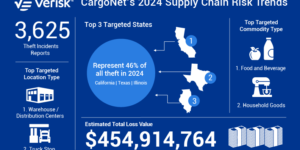
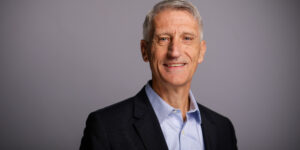
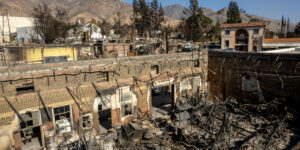

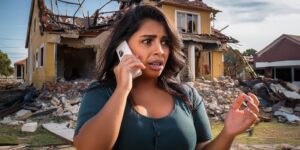

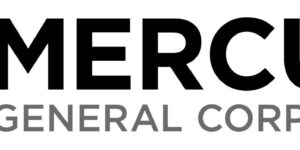
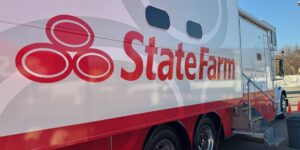




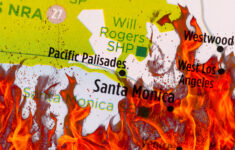





 Study Shows Some Buildings Along Miami Coastline Are Sinking
Study Shows Some Buildings Along Miami Coastline Are Sinking  Future of Jobs: Claims Adjuster Among Fastest Declining Professions
Future of Jobs: Claims Adjuster Among Fastest Declining Professions 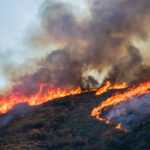 Smoke, Coverage Issues Cloud Wildfire Forecast: $35-$45B Losses Insured
Smoke, Coverage Issues Cloud Wildfire Forecast: $35-$45B Losses Insured  Rapid Response Effort Initiated to Respond to Fraud After Wildfires
Rapid Response Effort Initiated to Respond to Fraud After Wildfires 
